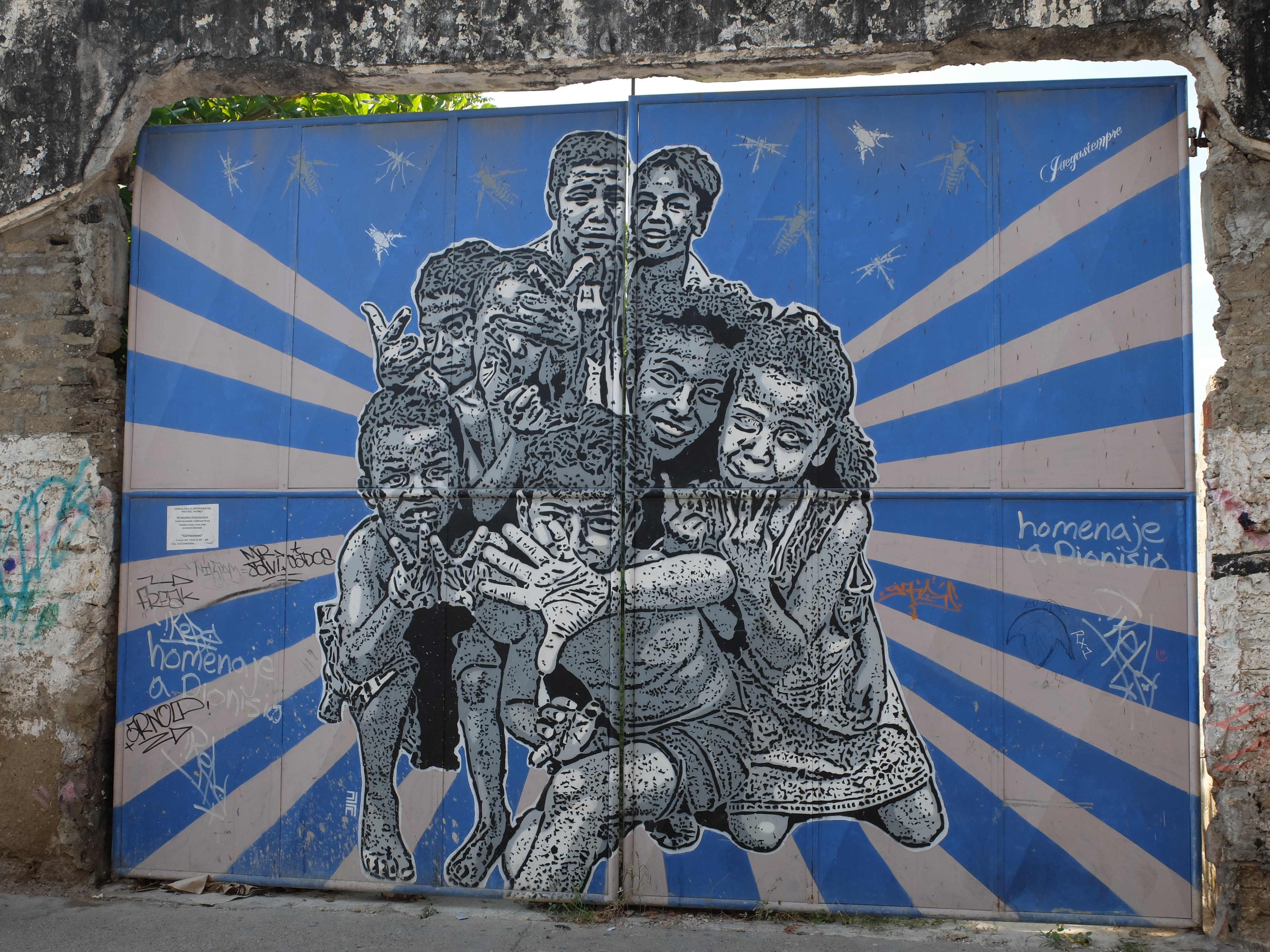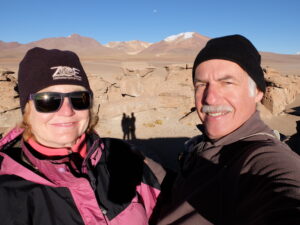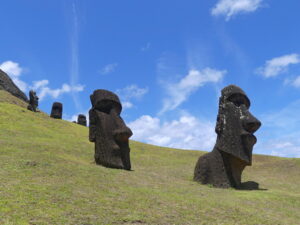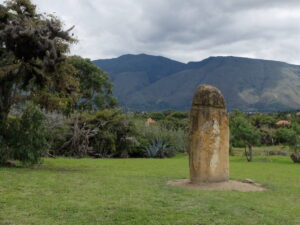
On the Caribbean coast of Colombia, during the carnival-like celebration in January, many celebrants dress up as Cayman Man. Half cayman (the local crocodile) and half human, the mythical figure embodies several dualities, human and animal, moral and immoral, good and evil. The myth tells of a man who wanted to spy on women bathing naked. To this end, he used an oil to convert himself into the cayman and then revert to a man. But his wicked plot didn’t work out well, and he ended up half of each.
Similarly, Colombia has been and continues to be a country of great contrasts. It is the only South American country with both a Caribbean and Pacific coast, yet the Caribbean one is populous, commercially important and touristy, while the Pacific one is sparsely populated and rarely visited. To match its overheated coastline, the country comprises a broad, sweltering lowland Amazonian region virtually impenetrable to visitors. But it also boasts a huge temperate highland region with three spines of the Andes mountains divided from each other by the great rivers of the Magdalena and the Cauca. Colombia is as old as anything in the Americas, with post-colonial towns dating from the 1500s and the astonishing archeological record of indigenous tribes from 2000 or more years ago. And it is new and growing, rich in resources, as its cities and their populations sprawl outward.
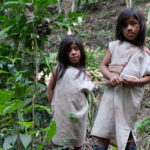
Its past has seen the rise and disappearance of accomplished tribes, as well as the predations and persecutions by the Spanish. Colombians now speak reverently of those indigenous tribes that survived Spanish colonization, with respect for their customs, natural knowledge and lifestyles. They support efforts to restore land to the tribes and rights to usage. For example, the tourist haven of Tayganga National Park in the northeast corner of Colombia has begun limiting access to the sections considered sacred by the tribes resident in the park, especially during important ritual periods. Yet, rights still are trampled at times with the lure of economic gain from oil and other natural resources – and many farmers have been displaced, finding themselves homeless or downtrodden in the big cities.
The Caribbean city of Cartagena (the fifth largest in Colombia at about 1 million) and the nouveau riche highland one of Medellin (the second largest with about 4 million in the metro region) demonstrate many of these same contrasts. And that is true both within each city and between them.
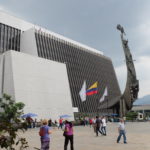
Medellin is perhaps best known in other countries as a notorious center for the drug trade and cartels that ran it. Decades of civil war endangered the populace and militarized so much of the countryside. Over the last few years, like Colombia overall and somewhat unlike the Cayman man, Medellin has been transforming itself successfully from that sorrowful past. Medellin is now an economically thriving city that is fully safe and secure.

Though 400 years old, it’s a relative upstart in look and feel. There’s not much here before its mid-19th century growth spurt and more recent commercial success, unlike its colonial sister towns. It’s even different topographically – set in a deep valley out of which the dense neighborhoods scramble toward the forested tops of the hills
The sleek elevated metro down in the cleft speeds over other contrasts, connecting them all. In the central city, you can gaze out at a mish-mash of decaying buildings here, gleaming new structures over there, splendid parks and wide-open plazas.

Near the public buildings, the central cathedral presides over a rectangular gathering place dominated by more than a dozen huge, bulbous sculptures designed by native son Fernando Botero. It’s a whimsical, playful place for people to delight in the bronzes or climb all over them.

Much less refined and genteel is the adjacent plaza of Ermita de la Veracruz, a 17th and 18th century church that connects with bustling narrow streets. In its vicinity, you can find small industrial shops (appliances, hardware, electrical, home supplies, and so on) and teeming vendor carts – plus the center of the town’s street prostitution.

The nearby old central market, La Minorista, offers shoppers a daily market of huge scale, in a downtrodden section adjacent to the speedy modern bus system. Oddly, it is ringed by a host of shops for families to get their hair cut.

To the south, the city planted its counterpart, the new La Mayorista, in the midst of the upscale section of town. It’s a vast wholesale and retail complex, that offers produce market, big box stores and brand name shopping. Nearby, you can find a host of boulevards radiating from the central city, each packed with shopping malls and high-rise apartment buildings.
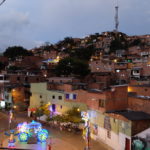
The northern part of the city belongs to the poorer citizens. Just twelve years ago, sections like Popular 1-3 and Santo Domingo, draped over the steep hillsides, were drug and crime filled areas due to the Medellin cartel. Now – after government commitment of resources and jobs, the addition of infrastructure like its tramway, and stepped-up policing – all live safely upon the hill. The cartel is gone. Tourists like us even come to check it out.
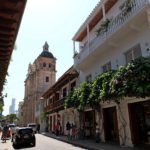
Down at sea level, the city of Cartagena de las Indias was named for Cartagena back in Spain, which in turn was named for the ancient Libyan capital of Rome’s old enemy, Carthage. The Colombian city’s full name preserves Columbus’ mistake. He thought he had found a new route to the spices and other riches of India.
Where Medellin is high at 1500 meters (nearly 5000 feet), Cartagena is pretty much all at sea level with the exception of one hill, La Popa, so named for its resemblance to the upside down butt end of a sunken ship. It is hot, equatorial hot except for the trade winds that blow across the Caribbean.
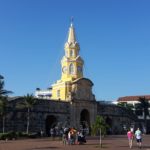
And it is among the oldest towns of the Spanish colonial period, founded in 1533 by Pedro de Heredia. Some of its structures like the church of San Pedro Claver originally date from shortly thereafter, though they have been reconstructed in the 17th and 18th centuries.

The old town, about a kilometer in each direction, is surrounded completely by fortified walls begun around 1600, completed 200 years later – and still enclosing the central city. Nearby the 17th and 18th century fort defended the town against attack by the British and Americans, as well as pirates and buccaneers.
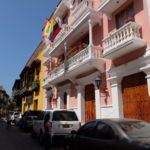
Within the walls, Cartagena’s residential buildings form a wondrous historical record of its success as a port – and merit its UNESCO World Heritage designation. Colonial-era buildings with jutting dark wood balconies often weighed down by flower gardens sit next to the 19th century Republican era structures, often with neo-classical touches. You can still see the building that housed the Spanish Inquisitors and the place where they tormented alleged heretics through the 17th and 18th centuries. Even the newest buildings have an old look, like the Clock Tower Gate or the frou-frou French styling of the main cathedral.
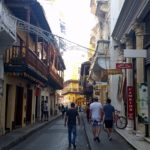
Not surprisingly it’s a popular tourist destination. The visitors transform the inner city into a teeming playground, as they savor the charm of the old city before sampling the white sand beaches in the area or the paradisal Rosario islands offshore.

At sunset, all of them seem to end up on the west end of the old town, on the fortifications, for the daily ritual of sunset watching along the Caribbean shore. Shops in the old town always occupied the ground floors of buildings, but now they’re stuffed with souvenirs and handicrafts, quickie food places and bars, plus plenty of options for the high end buyer.
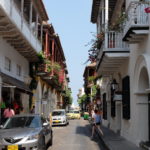
Visitors cram the narrow sidewalks. At night, the main plazas toward the southern end buzz with people dodging the horse-drawn carts clopping between them. The less showy north end of the old town is relatively quiet and residential, an oddly peaceful haven away from the tourist tsunami.
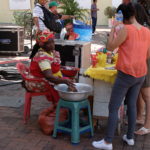
On the principal streets, the whole place has an intense, yet slow moving Caribbean feel. Loud, pulsing music hits you every few buildings. Cart vendors sell jugos naturales (the traditional refreshment all around Colombia), whole fruit, arepa-variations and other street foods. Women still dressed traditionally in brilliant eye-catching colors offer cut fruit to stave off heat-driven thirst.

Though a bit quieter, even the centuries old neighborhood of Getsemani bustles. Its narrow streets of one story buildings in a rainbow’s array of colors has turned hipster – with countless hostels and courtyard hotels taking over the homes, the classiest street art on display and hot new gourmet restaurants popping up.
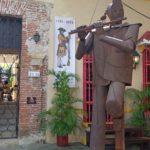
Again the contrasts within are great. The bay that made Cartagena such a good port is lined on the east with extensive commercial operations to ship fruit and other goods elsewhere. East of the port, below Popa hill, tucked surprisingly along a green sward of mangroves that has staved off development, sprawl the patchwork rooftops of the lower tier income people of the city.
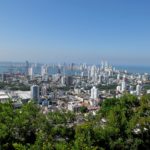
Across the bay on its western flank you’d think you were gazing at a white-washed version of Dubai, with countless high-rises and apartment buildings trying to outgrow each other for sunlight. Close by on landfill is the upscale hotel row and its manicured beachfront.
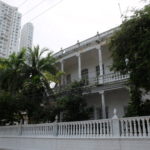
Midway between the bay’s flanks – and the economic levels – is Manga Island, just a short bridge away from the old town or Getsemani, and largely middle class, though the 19th century mansions on the island show that the rich chose it in the past.

The dualistic qualities of these cities and the country, their Cayman man nature, appears economically as well. The gap between rich and poor is still large. But the struggle for a more equal society continues. Investment in improving the lives of the poorest and least fortunate, as in the Santo Domingo neighborhood of Medellin, is a priority. On a day to day basis, every Colombian pays for services like electric and higher education in a graduated fee system based on one’s income. This approach has broad popular approval here at all income levels, and opens up opportunity across the economic classes.
Perhaps the Cayman man will apply the right oil after all.
(Also, for more pictures from Colombia, CLICK HERE to view the slideshow at the end of the itinerary page.)


